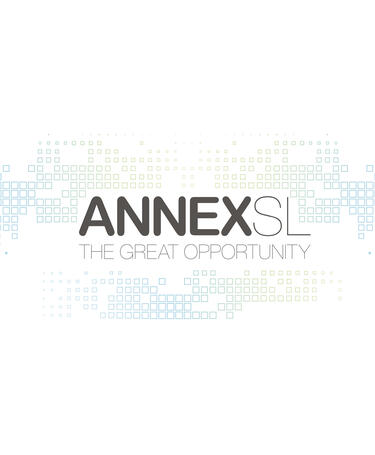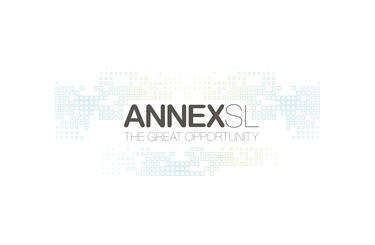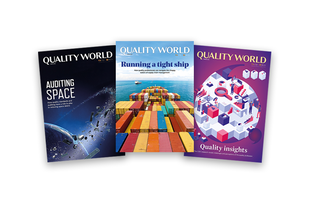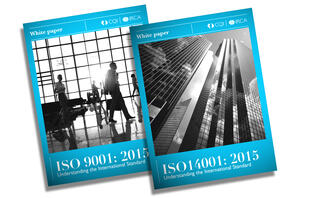
Seminar video: ISO 9001:2015 in a nutshell
Progress indicator

The release of ISO 9001:2015 was one of the most highly anticipated events of the year. Its launch in late September raised many challenges for quality and auditing professionals, with questions about what the changes would mean in practice as well as theory.
The CQI’s ‘ISO 9001 in a Nutshell’ briefings and implementation seminars offered practical skills and guidance about how to achieve a smooth transition to ISO 9001: 2015. They also proved a valuable membership benefit.
For those who missed it or who need a recap, we are issuing the following video (below), recorded live at the CQI’s Cambridge branch. This in-depth analysis provides over an hour of technical insight from technical expert Richard Green, Head of CQI Professional Networks. The video includes discussion of the changes and challenges within ISO 9001 for all those involved with quality processes and systems.
To put the discussion into context, the key changes within ISO 9001:2015 are:
Annex SL
The new standard adopts the format and terminology of Annex SL. Annex SL was developed to ensure all future ISO management system standards would share a common format, irrespective of the specific discipline to which they relate. Annex SL prescribes a high-level structure, identical core text, and common terms and core definitions. This means that even when requirements are essentially unchanged between ISO 9001:2008 and ISO 9001:2015, these are frequently found under a new Clause/sub-Clause heading.
Leadership
Clause 5, previously ‘Management Responsibility’, now becomes ‘Leadership’. Top management are required to demonstrate that they engage in key quality management system activities as opposed to simply ensuring that these activities occur. This means that there is a need for top management to be actively involved in the operation of their quality management system. The removal of all references to the role of ‘management representative’ reinforces the requirement to see quality management systems embedded into routine business operations, rather than operating as an independent system in its own right with its own specialist management structure and processes.
Context
Two new Clauses (4.1 and 4.2) are introduced relating to the context of the organisation. The organisation is required to identify explicitly any external and internal issues that may impact their quality management system’s ability to deliver its intended results. They must also understand the needs and expectations of ‘interested parties’ (or stakeholders) – those individuals and organisations that can affect, be affected by, or perceive themselves to be affected by, the organisation’s decisions or activities.
Scope
ISO 9001:2015 places a greater emphasis on the definition and content of the scope of the quality management system than ISO 9001:2008. The scope sets the boundaries for, and identifies the applicability of, an organisation’s quality management system. Clause 4.3 requires scope to be determined in consideration of the organisation’s context.
Process approach
While ISO 9001:2008 promoted the adoption of a process approach when developing, implementing and improving the effectiveness of a quality management system, Clause 4.4 of ISO 9001:2015 sets out specific requirements considered essential to the adoption of a process approach.
Risk-based thinking
References to preventive action have disappeared. However, the core concept of identifying and addressing potential mistakes before they happen very much remains. ISO 9001:2015 now talks in terms of risk and opportunities. The organisation must evidence that it has determined, considered and, where necessary, taken action to address any risks and opportunities that may impact (either positively or negatively) its quality management system’s ability to deliver its intended results or that could impact customer satisfaction.
Services
The term ‘product’ has been replaced by ‘products and services’. Previously, the inclusion of services as products was implicit. By including explicit reference to services, the standard writers are attempting to reinforce that ISO 9001:2015 is applicable to all organisations, not just those that provide tangible products.
Improvement
ISO 9001:2015 Clause 10 recognises that incremental (continuous) improvement is not the only improvement profile. Improvement can also arise as a result of periodic breakthroughs, reactive change or as a result of reorganisation. Thus, the title of this Clause is now ‘Improvement’ (ISO 9001:2008 8.5.1 was “Continual improvement”).
External provision
The phrase ‘externally provided processes, products and services’ replaces ‘purchasing’ and ‘outsourcing’. Clause 8.4 addresses all forms of external provision, whether it is by purchasing from a supplier, through an arrangement with an associate company, through the outsourcing of processes and functions of the organisation, or by any other means. An organisation is required to take a risk-based approach to determine the type and extent of controls appropriate to each external provider and all external provision of products and services.
Documentation
References to requirements for a documented quality manual, documented procedures and to quality records have been removed. Instead, throughout ISO 9001:2015 there are specific references to ‘documented information”. This is information that the organisation is required to control, maintain and retain. How it wishes to record this information is up to the organisation itself; formats and storage methods are not prescribed in the standard.
Clarity
There has been a conscious attempt to revisit the wording of the standard with a view to making the requirements easier to understand and to aid its translation. Where requirements were previously implied, the wording of the standard has been amended to make them explicit. Understanding the organisation and its context, the adoption of a process approach, and risk-based thinking are perhaps the most significant examples but these are not the only instances, as a detailed examination of the clauses confirms.
Terminology
As in the 2000 and 2008 editions, the terms and definitions remain in the separate standard - ISO 9001:2015. ISO has also made the terms and definitions available online.
Annexes
ISO 9001:2015 has two informative annexes. Annex A provides clarification on the new structure, terminology and concepts underpinning the standard. Annex B details the other International Standards on quality management and quality management systems developed by ISO/TC 176. These are designed to provide assistance to an organisation seeking to establish, implement, improve or audit its quality management performance.
Download our exclusive report for detailed analysis and interpretation of the requirements of ISO 9001:2015 here.
Download our exclusive report for detailed analysis and interpretation of the requirements of ISO 9001:2015.
Member only

This article is free to access for a limited time only. Only CQI and IRCA members receive access to all content.
Get the latest ISO reports and resources

Our many reports and resources will help you achieve a smooth transition to ISO 9001:2015 and ISO 14001:2015.